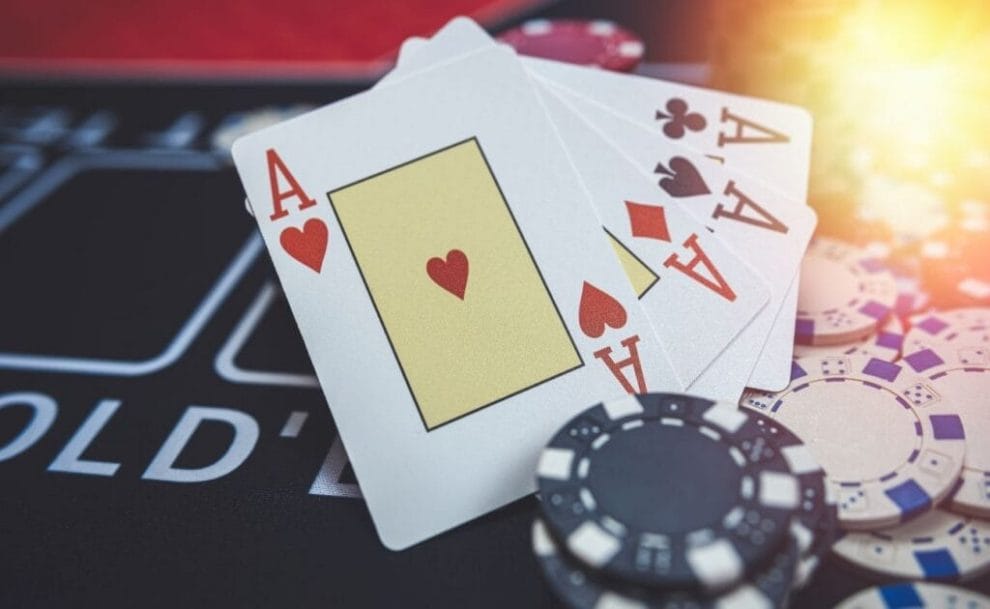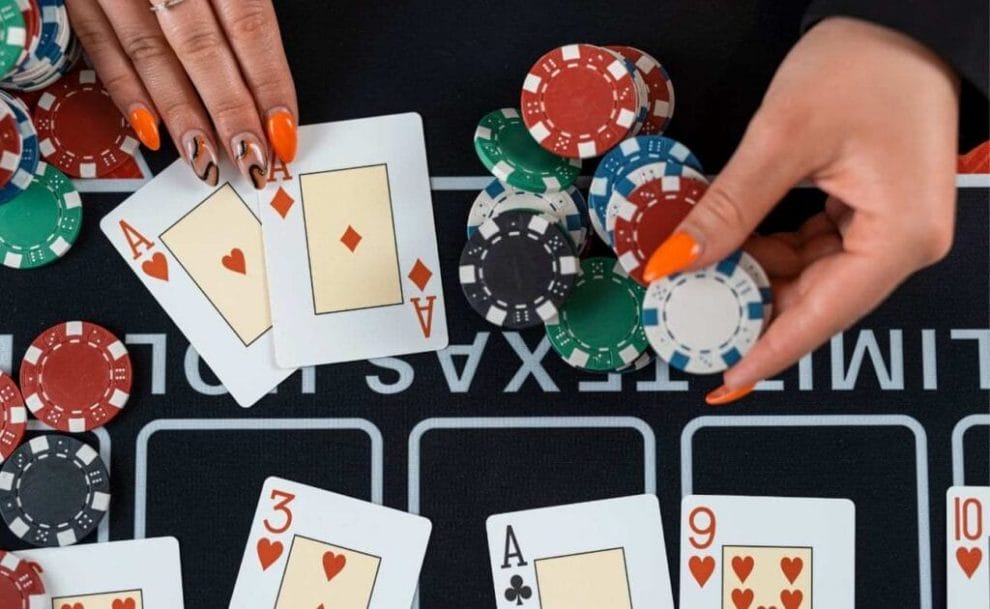
Although poker is a highly complex game of skill, with thousands of possibilities during every hand, there are only ever four decisions to make: check, call, fold, or bet. Making the right decision at the right time is the ultimate goal. If you want to minimize your losses, you have to know when you’re beat and it’s time to fold. To control the pot, you need to know when it makes sense to check and call. To make money, you have to learn when to place a bet and how big it should be.
None of this is obvious to a beginner player, but with a solid grasp of the fundamentals and a good work ethic, you can make steady progress in learning how to be successful in playing both in-person and online poker. Keep reading for a basic breakdown of online poker betting rules and tips.
Poker Betting Rules

The most popular poker variant is Texas hold’em, so it’ll be the focus of discussion here. Up to nine players are dealt two hole cards each, and the preflop betting round begins. This is when players weigh up their hands and decide whether to get involved in the pot or not. Two players have no choice: before the deal, the player immediately clockwise of the dealer position has to post a forced bet called the “small blind,” and the player immediately clockwise of them has to post a forced bet double the size, called the “big blind.”
The betting action proper begins with the player clockwise from the big blind, in the position called “under the gun” (UTG). Depending on their hand strength, this player can call the big blind (place the same number of chips on the table), bet (place a bigger number of chips), or fold (drop out of the hand without betting). So if the big blind is $2, the UTG player can call for $2, raise for $3 or more, or fold.
The remaining players all have the same choices — call, bet, or fold — until the action comes round to the big blind, who is the last player to act before the flop.
After the Flop

Once the preflop betting round is over, the dealer burns a card from the top of the deck and peels the first three community cards onto the table. This is called the flop. Betting resumes, but this time it’s the big blind who’s first to act and the dealer who’s last. This is extremely important. Being last to act means that the dealer “has position” on all the other players. In other words, the dealer gets to see what all the other players do before making a decision. Basically, the player in position has the most control over the pot.
The available actions are the same, with the addition of checking. If the first-acting player doesn’t want to bet, they can check, and pass the action to the next player, who can also check if they want to, and so on, until somebody bets. The only legitimate responses to a bet are to fold, call, or raise. A check-raise is when you check, the action checks back to you, and you raise. Players do this to get information about their opponent’s hand (a strong-handed player is unlikely to check back).
Once the flop is over, the dealer burns another card and peels the fourth community card, known as the turn. Betting proceeds in the same way as on the flop. Then comes the river, or final betting round. The dealer burns a card, turns over the fifth community card, and the final betting round takes place.
When that’s complete and there’s more than one player left in the pot, the last player to bet or raise shows their hand, and the pot goes to the player with the best five-card poker hand.
Poker Betting Charts
Although the basic poker betting rules are easy to understand, it isn’t intuitively clear when it’s a good idea to bet and when not. There are general guidelines, of course. You can bet to grow the pot, steal the blinds, put pressure on your opponent, or bluff them into folding. You can also call to stay in the game without committing more chips, or check from position to see how your opponent responds, and raise if they represent weakness by checking back.
None of these insights will really make sense, though, until you play the game. To give yourself a helping hand, it’s a good idea to get hold of some poker betting charts. For example, a starting hand chart will show you the range of hands considered mathematically sound to call or raise with before the flop. It’s a good idea to memorize at least the top 10 starting hands for each position.
After that, it’s time to do some real-life online poker betting. A good way to start is with micro-stakes cash games. With blinds as low as $0.01/$0.02, you can get some experience without risking too much money. Alternatively, you can participate in poker tournaments. Here, the most you can lose is the buy-in, which is the cost of entering the tournament. There are also freeroll tournaments with no buy-in required. It’s a great way to get your hand in and slowly catch up with all the innovations in poker.
Play Online Poker for Real at Borgata
Ready to get your poker game on? Register at Borgata Online to explore all the benefits of playing poker. Discover the variations, from Texas hold’em to seven-card stud and three-card poker. Enjoy cash games and online poker tournaments with stakes and buy-ins to suit every pocket and level of skill. Beyond poker, there’s a broad range of online casino games to explore, from the latest slots to classic casino table games such as blackjack, roulette, craps, and baccarat. Play it your way at Borgata Online.
